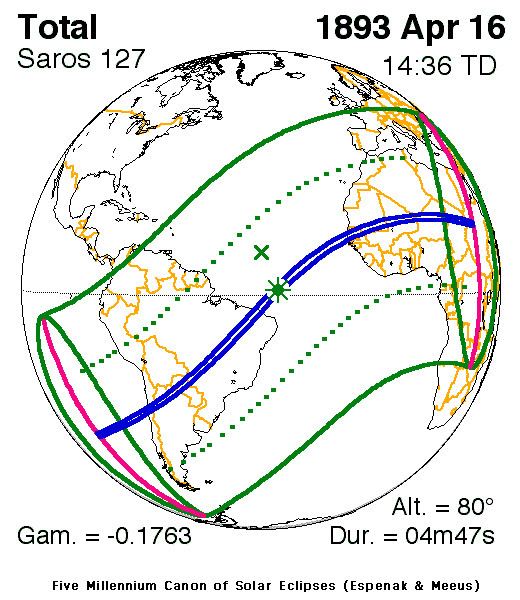Nature Total Magnitude 1.0556 Max. width of band 186 km (116 mi) Start date April 16, 1893 | Gamma -0.1764 Duration 287 sec (4 m 47 s) Greatest eclipse 14:36:11 | |
 | ||
A total solar eclipse occurred on April 16, 1893. A solar eclipse occurs when the Moon passes between Earth and the Sun, thereby totally or partly obscuring the image of the Sun for a viewer on Earth. A total solar eclipse occurs when the Moon's apparent diameter is larger than the Sun's, blocking all direct sunlight, turning day into darkness. Totality occurs in a narrow path across Earth's surface, with the partial solar eclipse visible over a surrounding region thousands of kilometres wide.
Contents
Observations
Schaeberle observed the eclipse and made drawings of the Corona:
According to Edward S. Holden, John Martin Schaeberle discovered a comet like object on the plates of the eclipse from Chili. The comet was 0.8 moondiameters from the moon.
Saros 127
It is a part of Saros cycle 127, repeating every 18 years, 11 days, containing 82 events. The series started with partial solar eclipse on October 10, 991 AD. It contains total eclipses from May 14, 1352 through August 15, 2091. The series ends at member 82 as a partial eclipse on March 21, 2452. The longest duration of totality was 5 minutes, 40 seconds on August 30, 1532.
